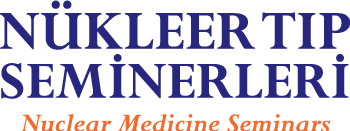ABSTRACT
In order to evaluate motility disorders, in patients who have gastrointestinal symtoms, there are so many diagnostic procedures such as endoscopy, barium radiography, manometric measurements, pH monitoring, breath tests, electromyelographic studies, radiography with opac granules and wireless capsules. All of these diagnostic tests may alter normal physiology of the patients and some of them my cause patient discomfort. Radionuclide transit time studies have no effect on patient physiology. After giving orally small amount of radioactivity in solid or liquid form, it is possible to get objective and quantitative results without changing patient physiology. In this context, nuclear medicine procedures related to gastrointestinal motility are noninvasive, quantitative and physiologic. There are different neurohumoral factors interacting gastrointestinal motility and the motility has own complexity. Some conditions related to patient, modifications in test protocols, technical details related to gamma camera and used computer software may cause conflicting test results. Although, there are some efforts to reach a consensus and standardisation of the tests, it is advised that every nuclear medicine laboratory may find out their own normal limits. In this manuscript, radionuclide motility studies of esophagus transit time, gastroesophageal reflux studies,gastric emptying studies, small bowel and colonic transit time studies are briefly summerised.
Keywords:
Esophageal transit time scintigraphy, gastroesophageal reflux scintigraphy, gastric emptying time scintigraphy, radionuclide intestinal transit time examination
References
1Al Taei TH, Aly S, Fawzy A. Esophageal Tansit Time Scintigraphy in the Assessment of the Esophagus Motility. Bahrain Med Bull 2017;39:181-183.
2Prásek J, Hep A, Dolina J, Díte P. Dynamic esophageal scintigraphy in patients with achalasia. Nucl Med Rev Cent East Eur 2000;3:57-60.
3Solnes LB, Sheikhbahaei S, Ziessman HA. Nuclear Scintigraphy in Practice: Gastrointestinal Motility. AJR Am J Roentgenol 2018;211:260-266.
4Maurer AH. Gastrointestinal Motility, Part 1: Esophageal Transit and Gastric Emptying. J Nucl Med. 2015;56:1229-1238.
5Bar-Sever Z. Scintigraphic Evaluation of Gastroesophageal Reflux and Pulmonary Aspiration in Children. Semin Nucl Med 2017;47:275-285.
6Tuncel M, Kıratlı PO, Aksoy T, Bozkurt MF. Gastroesophageal reflux scintigraphy: interpretation methods and inter-reader agreement. World J Pediatr 2011;7:245-249.
7Maurer AH. Advancing gastric emptying studies: standardization and new parameters to assess gastric motility and function. Semin Nucl Med 2012;42:101-112.
8Donohoe KJ, Maurer AH, Ziessman HA, et al. Procedure guideline for adult solid-meal gastric-emptying study 3.0. J Nucl Med Technol 2009;37:196-200.
9Abell TL, Camilleri M, Donohoe K, et al. Consensus recommendations for gastric emptying scintigraphy: a joint report of the American Neurogastroenterology and Motility Society and the Society of Nuclear Medicine. J Nucl Med Technol 2008;36:44-54.
10Maurer AH. Gastrointestinal Motility, Part 2: Small-Bowel and Colon Transit. J Nucl Med 2015;56:1395-1400.
11Read NW, Al-Janabi MN, Holgate AM, Barber DC, Edwards CA. Simultaneous measurement of gastric emptying, small bowel residence and colonic filling of a solid meal by the use of the gamma camera. Gut 1986;27:300-308.
12Bennink R, Peeters M, Van den Maegdenbergh V, et al. Evaluation of small-bowel transit for solid and liquid test meal in healthy men and women. Eur J Nucl Med 1999;26:1560-1566.
13Mariani G, Paglianiti I. Joint SNMMI and EANM guideline for small-bowel and colon transit: an important step towards long-awaited standardization. Eur J Nucl Med Mol Imaging 2014;41:405-407.
14Maurer AH, Camilleri M, Donohoe K, et al. The SNMMI and EANM practice guideline for small-bowel and colon transit 1.0. J Nucl Med 2013;54:2004-2013.



